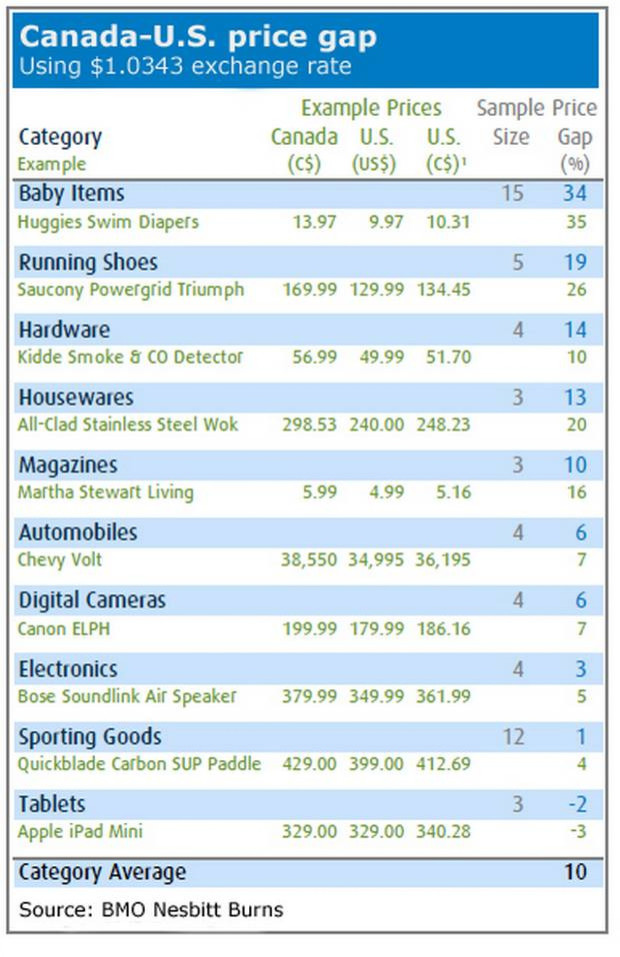Canada Pays More For Consumer Items, Thanks To A Strong Loonie, High Minimum Wage And Fuel Costs

The loonie is worth four cents less than the dollar, but shoppers still pay about 10 percent more in Canada than in the United States.
A report released Wednesday by BMO Nesbitt Burns shows that the price gap has narrowed to 10 percent from 14 percent in May, but Canada’s duck-named dollar coin is “simply too strong for its own good,” said BMO’s chief economist, Douglas Porter.
“While the high-flying currency has lost some altitude in the past year -- it’s down about 4 percent this year -- the slide has largely stalled in recent months at levels still above what we would consider fair value, let alone the OECD’s measure of purchasing power parity,” Porter wrote in a note.
“One of those lingering fundamentals is that the Canada-U.S. price gap remains locked in place, still drawing a phalanx of cross-border shoppers southbound from Canada,” he added.

The costs of goods such as cars and books have narrowed in the past six years. But Target Corporation’s (NYSE:TGT) huge debut in Canada last March -- owing to opening 124 stores coast to coast -- did little to lower prices.
The gap remained at 34 percent for baby items, 19 percent for running shoes and 14 percent for hardware, such as smoke detectors. Housewares cost 13 percent more in Canada than in the U.S., and magazines sold for 10 percent more.
But there was one outlier that is bound to delight Canadian techies -- tablets, which cost, on average, 2 percent less in Canada than in the U.S. Apple Inc.’s (NASDAQ:AAPL) iPad Mini was priced 3 percent lower in Canada than in the U.S.
Still, for some products, the price difference is staggering.
A February report by the radio show “Marketplace” found that a bottle of Bayer Aspirin -- $5.96 in a U.S. Wal-Mart -- cost $13.86 in Canada.
And some suggest the BMO report reflects the lower end of the range, speculating the gap can be up to 50 percent.
“Multinational brands have two different price lists … [one] for retailers in Canada, and [one] for retailers in the United States,” Diane Brisebois, president of the Retail Council of Canada, told Marketplace. “And I can guarantee you that the price lists for retailers in Canada [have] prices that are between 10 percent [and] 50 percent higher than the prices in the United States.”
Another possible reason for the price difference is the number of people in Canada, and how much they earn for retail work.
“There’s the reality of the vast geography that is Canada and increased fuel prices and different wage rates,” Tony Fisher, the president of Target Canada, said in a March interview with the Globe and Mail. “There’s the reality of just the lack of economies of scale across a country this size, with a population that’s 10 percent of what it is in the U.S.
Federal minimum wage in the U.S. is $7.25, but it's as high as $9.19 in the state of Washington. Compare that to Canada, whose minimum wages ranges from $9.95 to $11, depending on the province.
© Copyright IBTimes 2024. All rights reserved.






















